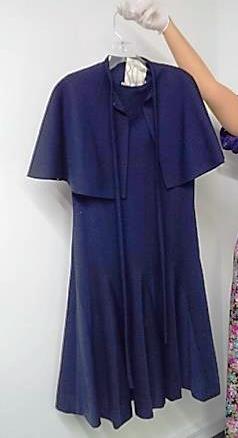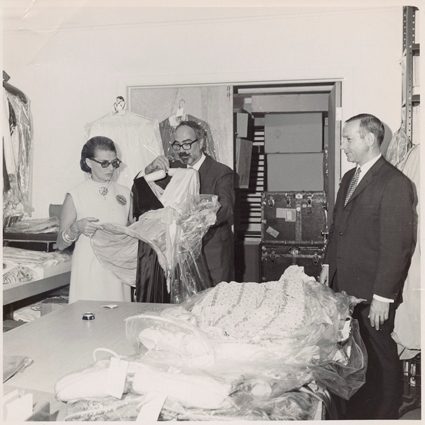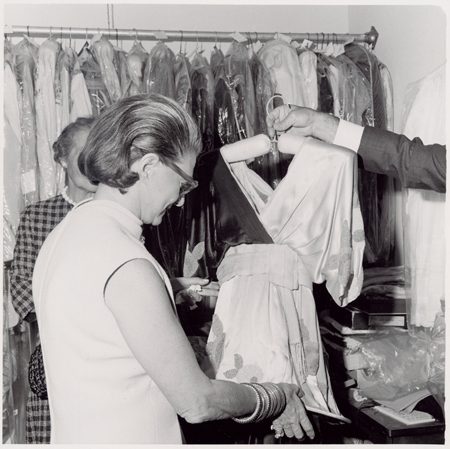Former CHM costume collection intern Michelle McVicker writes about a fascinating discovery she recently came across in the Museum’s archives. She is currently a MA candidate in Fashion Studies at Parsons School of Design.
Pauline Trigère (1912–2002) was a French-born American designer. It would seem as though her future in fashion design was predetermined, as her mother was a dressmaker and father was a tailor. At the age of twenty-five, Trigère moved to New York and in 1942 she opened her own fashion house, which she managed until her death at the age of ninety. Ultimately, it was Trigére’s combination of French elegance and American practicality that made her a success throughout her sixty-year career in the fashion industry. She is even quoted as stating, “People always say to me, ‘Aren’t you French?’ And I say, ‘No, I am American.’ I found in this country everything I wanted. This country made me Pauline Trigère.”

A Pauline Trigère garment from the Parsons garment archives. Photograph taken by CHM staff
One of my final projects last semester in my Fashion Studies masters program required dating a Pauline Trigère ensemble from the Parsons garment archives. For my portion of the group research, I paid a lovely visit to the Chicago History Museum where I interned this past summer. My internship supervisor, costume collections manager Jessica Pushor, was kind enough to provide me with the catalogue descriptions and photographs for all the Pauline Trigère clothes in the Museum’s possession. She also let me handle some of the garments themselves. Although none of the silhouettes were overwhelmingly similar to that of my assigned ensemble, the construction and use of princess seams were consistent throughout. According to the Fashion Encyclopedia, Trigère’s “princess line dress has consistently been considered to have no equal,” which I was able to witness through first-hand close object analysis.
The most compelling discovery came when we looked through the Pauline Trigère newspaper archives folder. Inside, we found a Chicago Tribune article dated March 4, 1963, showing a model wearing a Trigère “tailored town costume” with “caplet and flares” that “accent your natural curves.” Given that the Parsons’s dress did not have a physical Trigère label on it (though we were assured it was an original), the next best way to date it was by comparing it to her other designs from which we were able to estimate its date to the early 1960s. It was extremely validating to find such a specific source of evidence and once again prove the benefits of combining paper and costume archives in order to tell the stories held by garments.
Additionally, lo and behold, it turns out Trigère paid a visit to the Chicago History Museum in 1967.

Trigère handles Paul Poiret’s “Sorbet” dress as it is taken out of storage. CHM, ICHi-075779

These two photographs show Pauline Trigère visiting the costume collection at the Museum, where she had the privilege of handling an original Paul Poiret “Sorbet” dress from 1913, last displayed in Chic Chicago: Couture Treasures from the Chicago History Museum in 2008. It was a truly remarkable moment for me to witness the converging of two fashion icons at a single point in time and realize I had spent my summer in the room where the fascinating merge had occurred.